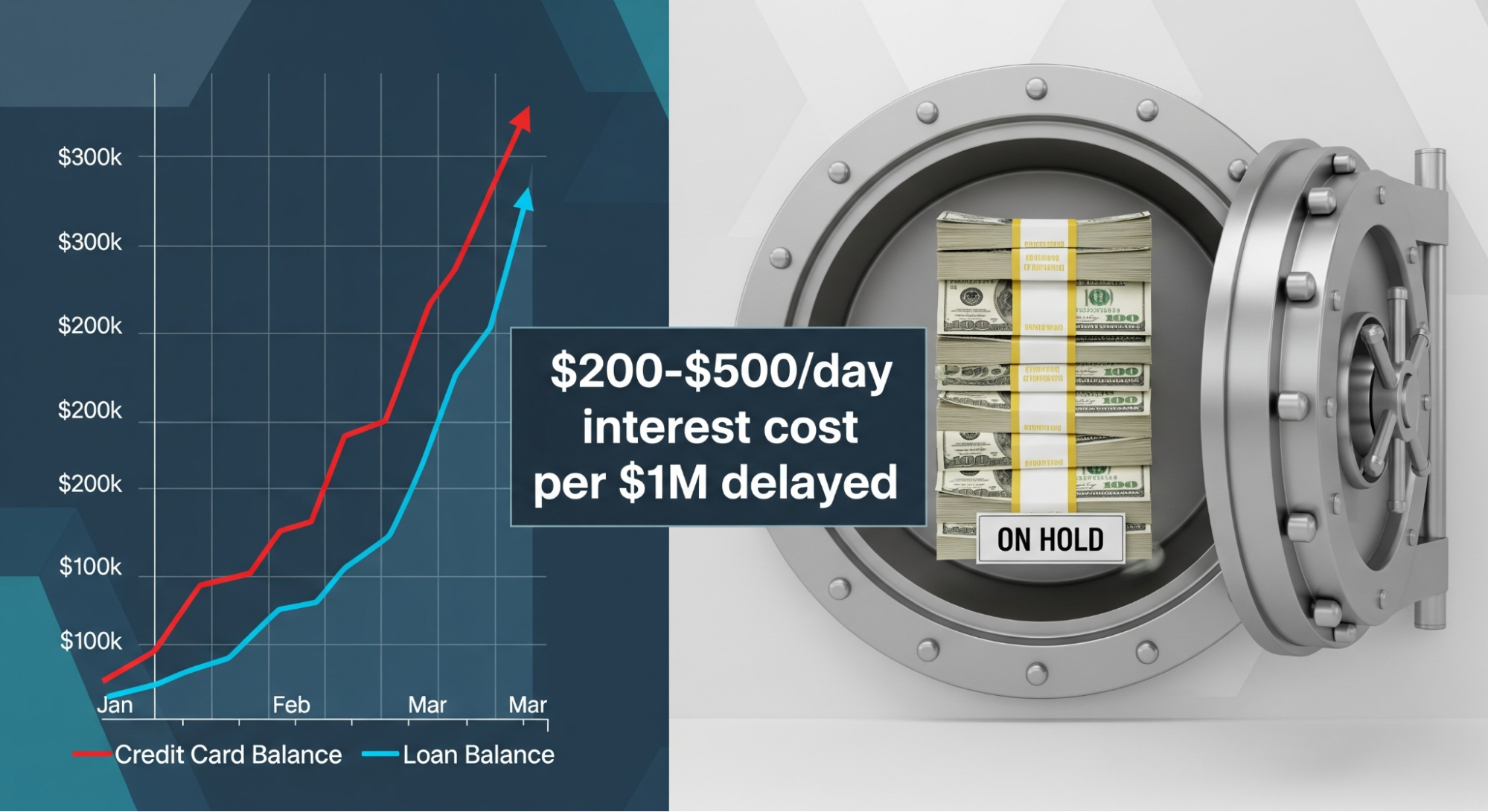Today's shoppers expect a seamless experience, and that includes how they pay. They move effortlessly between online, in-store, and mobile shopping, expecting consistent and convenient payment options at every touchpoint. For retailers, this means mastering omnichannel payment solutions – a complex but crucial aspect of modern business. This detailed guide breaks down the intricacies of omnichannel payments, offering practical advice and real-world examples to help retailers of all sizes simplify their processes and boost sales.
Understanding the Omnichannel Shopping Journey and Payment Needs
Omnichannel retail isn't just about having multiple sales channels; it's about creating a unified and consistent brand experience across all of them. Imagine a customer researching a product online, adding it to their cart, then deciding to pick it up in-store and pay there. Or perhaps they order online for home delivery and want to use a specific payment app. The customer journey is fluid, and payment solutions must adapt accordingly.
This fluidity means retailers need to offer a wide variety of payment methods to cater to diverse customer preferences and behaviors:
- Credit and Debit Cards: Still the most common payment method globally, offering familiarity and widespread acceptance. However, the rising popularity of other options means simply relying on cards isn't enough anymore.
- Digital Wallets: Services like Apple Pay, Google Pay, and Samsung Pay allow customers to pay quickly and securely using their smartphones. This is especially convenient for in-store purchases and mobile shopping. The growing popularity of these services reflects a clear trend towards faster, more user-friendly payment experiences.
- Buy Now, Pay Later (BNPL): Services like Klarna, Affirm, and Afterpay offer flexible payment plans, allowing customers to spread the cost of their purchases over time. This option is particularly appealing to younger demographics and those managing budgets carefully. The popularity of BNPL highlights the changing financial landscape and the need for retailers to offer more adaptable payment options.
- Mobile Payment Apps: Apps like PayPal, Venmo, and Cash App are increasingly used for both online and in-person transactions, particularly amongst younger consumers who are comfortable with mobile-first solutions. The ease and speed of these apps align perfectly with the need for faster checkout processes.
- Cryptocurrencies: While adoption is still relatively limited compared to other methods, cryptocurrencies like Bitcoin and Ethereum are gradually gaining traction. Offering crypto payment options can attract a niche market of tech-savvy customers, demonstrating a willingness to embrace cutting-edge technology.
- In-Store Payment Terminals: Point-of-Sale (POS) systems are the heart of in-store transactions. These systems need to be able to handle a variety of payment types efficiently and securely, ensuring quick and smooth checkouts. The choice of POS system significantly affects the overall customer experience.
- Automated Clearing House (ACH) Payments: ACH payments are primarily used for recurring billing or larger transactions. They offer a reliable and secure method for automated payments, simplifying processes for both the retailer and the customer. This is ideal for subscriptions or regular deliveries.
The Complexities of Omnichannel Payment Solutions
While offering a wide range of payment options is essential, implementing and managing an omnichannel payment system presents several challenges:
- Integration Complexity: Connecting different payment gateways, POS systems, e-commerce platforms, and inventory management systems is a significant technical undertaking. Ensuring all systems communicate seamlessly and share data accurately is crucial for efficient operations and accurate reporting. Poor integration can lead to delays, inconsistencies, and frustrating experiences for both staff and customers.
- Security Concerns: Protecting customer data is paramount. Omnichannel systems handle vast amounts of sensitive information, making them prime targets for cyberattacks. Compliance with regulations like PCI DSS (Payment Card Industry Data Security Standard) is not only essential but legally mandated to ensure the security of cardholder data. Failure to comply can result in hefty fines and irreparable damage to reputation.
- Cost of Implementation and Maintenance: Setting up and maintaining a robust omnichannel payment system requires significant upfront investment in hardware, software, and integration services. Ongoing maintenance, software updates, and security enhancements add to the total cost. Carefully evaluating the long-term costs versus the potential benefits is essential.
- Merchant Fees: Payment processors charge fees for each transaction. These fees can significantly impact profitability if not managed effectively. Negotiating favorable rates with payment processors and optimizing payment processes are vital for maximizing revenue.
- Customer Support: Providing clear and efficient customer support across all channels is essential. Customers may have questions or encounter issues related to payments regardless of where they shop, requiring a well-trained support team ready to assist across all channels. Poor support can lead to negative reviews and lost customers.
- Fraud Prevention: Omnichannel systems increase the attack surface for fraudulent activities. Implementing robust fraud detection and prevention measures, including advanced analytics and machine learning, is essential to minimize financial losses and protect the business's reputation.
Simplifying Omnichannel Payments: Practical Strategies
Successfully implementing omnichannel payment solutions requires a well-defined strategy. Here are some key steps:
- Choose the Right Payment Gateway(s): Select a gateway that supports multiple payment methods, integrates easily with your existing systems, offers robust security features, and provides clear reporting. Consider scalability to accommodate future growth and changing customer preferences. Don’t just choose the cheapest option; prioritize reliability, security, and functionality.
- Centralize Payment Management: A centralized system provides a single dashboard to manage all payment aspects, simplifying reconciliation, reporting, and fraud management. This enhances visibility into payment flows, allowing for better tracking of transactions, identification of trends, and quicker resolution of issues.
- Embrace a Unified Commerce Platform: A unified platform integrates all sales channels (online, in-store, mobile) into a single system. This eliminates data silos, streamlining operations and providing a unified view of inventory, sales, and customer interactions. This unified approach is vital for truly seamless omnichannel experiences.
- Prioritize Mobile Payments: Optimize your checkout experience for mobile devices. Ensure your website and apps are mobile-friendly, offering fast and secure mobile payment options. Mobile is increasingly the primary way consumers interact with brands and make purchases. Failing to provide a seamless mobile experience will directly impact sales.
- Personalize the Payment Experience: Offer payment options tailored to individual customer preferences based on their purchase history and behaviors. This personalized approach increases customer satisfaction and loyalty.
- Implement Robust Security Measures: Invest in strong security protocols to protect sensitive customer data. This includes encryption, tokenization, multi-factor authentication, and regular security audits to comply with regulations like PCI DSS. Security breaches can be devastating, both financially and reputationally.
- Invest in Training and Support: Provide comprehensive training to your staff on handling various payment methods and troubleshooting payment-related issues. Offer multiple support channels (phone, email, chat) to assist customers with questions or problems promptly and efficiently.
- Continuously Monitor and Optimize: Regularly analyze payment data to identify trends, areas for improvement, and potential fraud patterns. Utilize A/B testing to optimize the checkout process and payment options to enhance customer experience and increase sales.
- Partner with Payment Experts: Consider working with experienced payment solution providers to simplify implementation and management. These experts can offer valuable guidance, technical support, and ongoing maintenance. They can help navigate the complexities of integrating various systems and maintaining compliance.
Real-World Examples and Data Points
Several successful retailers demonstrate the benefits of effective omnichannel payment solutions:
- Amazon: Offers a wide range of payment options, including one-click purchasing and saved payment information, providing a highly personalized and convenient checkout experience. This frictionless experience significantly contributes to Amazon's success.
- Starbucks: Its mobile app allows customers to pay seamlessly using mobile ordering and payment, creating a highly efficient and convenient experience that encourages repeat business. This mobile-first strategy is central to their omnichannel success.
- Walmart: Uses sophisticated centralized systems to manage billions of transactions across various channels, showcasing the power of centralized payment management for large-scale retailers. Their vast infrastructure emphasizes the need for scalable solutions.
While precise figures vary across sources, data highlights the impact of omnichannel strategies and payment options:
- Cart abandonment: Studies suggest that around 70% of online shopping carts are abandoned. A significant portion of this is attributed to complicated or insufficient payment options.
- Mobile commerce: Mobile purchases are growing rapidly, accounting for a significant percentage of total e-commerce sales. Ignoring mobile optimization is directly detrimental to sales.
- BNPL growth: The Buy Now, Pay Later market is booming, demonstrating a shift in consumer preferences towards more flexible payment options. Retailers who fail to offer BNPL risk losing market share to competitors.
Conclusion: Embracing Omnichannel Payments for Growth
The competitive landscape demands that retailers prioritize efficient and integrated omnichannel payment solutions. By implementing the strategies outlined above, businesses can overcome the inherent challenges and reap significant rewards: increased customer satisfaction, higher sales, and streamlined operations. The investment in a secure omnichannel payment system is a strategic investment with a substantial return. It fosters customer loyalty, boosts customer lifetime value, and ultimately drives significant, sustainable business growth. The payoff extends far beyond mere transaction processing.












.jpg)
.avif)


.png)
.png)




